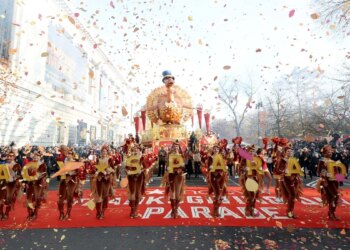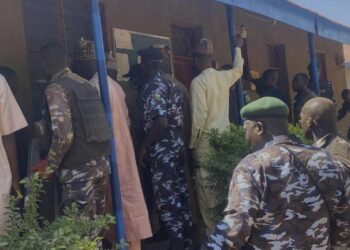The man suspected of shooting two National Guard members, Rahmanullah Lakanwal, was once part of a C.I.A.-backed paramilitary group, one of several so-called Zero Units, according to Afghan and U.S. officials.
These units, formerly known as Counterterrorism Pursuit Teams, were trained to conduct night raids and clandestine missions across Afghanistan during the U.S. war in the country. By the time the United States had withdrawn from Afghanistan in August 2021, the units had officially become part of the Afghan intelligence service and included thousands of members.
As the Afghan military dissolved and the U.S. military scrambled to evacuate thousands of people during the Taliban’s rapid takeover, the Zero Units were essential to securing the remaining U.S. and NATO bases in Kabul, Afghanistan’s capital. For some Zero Unit members, this ensured their eventual evacuation to the United States.
Mr. Lakanwal was assigned to the 03 unit, according to an Afghan intelligence official, speaking on condition of anonymity because he wasn’t allowed to comment publicly on the issue. The unit was responsible for operations around the southern province of Kandahar and beyond. Though the unit was based in the south, much of its leadership and members, like Mr. Lakanwal, were from Afghanistan’s east. After the Taliban took over Afghanistan, many of the unit members were evacuated with the United States’ help, including its last commander, and resettled in the Seattle area.
The Zero Units were largely recruited, trained, equipped and overseen by the C.I.A., according to Human Rights Watch. U.S. Special Operations forces working with the C.I.A. also provided the units with ground support and intelligence during their operations. Afghan officials told The New York Times in 2021 that their salaries were paid by the C.I.A.
The units, however, operated largely outside of the normal chain of command of U.S. and Afghan forces. In July 2021, when the president of Afghanistan wanted the forces to defend Kandahar City against the advancing Taliban, he had to ask the C.I.A. for the units’ aid, according to Afghan officials.
The units also had a reputation for ruthlessness, with journalists and human rights groups referring to them as “death squads.”
In a 2019 report, Human Rights Watch said it had documented several instances in which the strike forces were responsible for “extrajudicial executions and enforced disappearances, indiscriminate airstrikes, attacks on medical facilities, and other violations of international humanitarian law.”
In one instance, in 2018, an Afghan paramilitary force unit raided a home in Nangarhar province, in eastern Afghanistan, shooting and killing five members of a family, including an older woman and a child, according to Human Rights Watch.
Taliban officials have also condemned the units. On Thursday, an official in Nangarhar accused the groups of looting during the fall of the U.S.-backed government.
The C.I.A. has denied the allegations of brutality among the units, saying they were the result of Taliban propaganda. But in at least one instance, U.S. Citizen and Immigration Services used a Human Rights Watch report decrying the units as a reason to deny asylum to an Afghan soldier who had worked alongside the U.S. forces during the war.
Julian E. Barnes contributed reporting from Washington.
Jonathan Wolfe is a Times reporter based in London, covering breaking news.
The post Suspected Shooter Was in a ‘Zero Unit’ in Afghanistan. Here’s What We Know. appeared first on New York Times.




